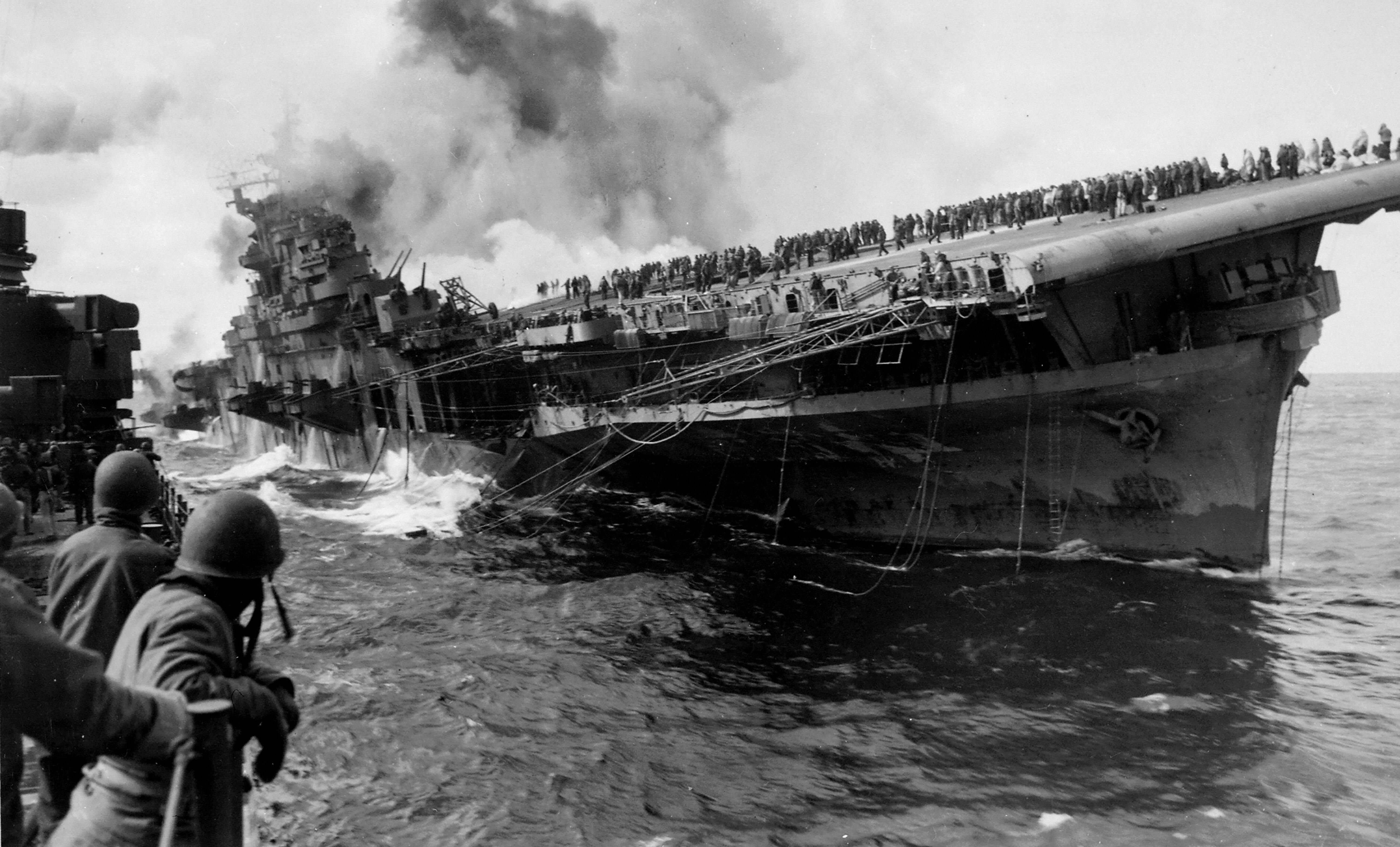
The Battle of the Bismarck Sea
 By Vegim Krelani
By Vegim Krelani
The turning point in the Pacific Theater
In the early months of 1942, the Japanese Imperial forces had achieved significant victories, rapidly advancing through Southeast Asia and the Pacific Islands. However, by the end of 1942, the tide began to turn, marked by crucial Allied victories that halted the Japanese advance. One such pivotal moment occurred in the Battle of the Coral Sea and the decisive Battle of Midway. Despite these setbacks for the Japanese, the Allies were far from securing control, and Japan remained determined to claim New Guinea. This sets the stage for a lesser-known but crucial battle—the Battle of the Bismarck Sea, a turning point that would shape the course of the New Guinea campaign.
Allies resurgence and Japanese overconfidence
In early May of 1942, the Battle of the Coral Sea saw the Japanese invasion force repelled, followed by the Allies’ triumph at Midway in early June. The Japanese encountered their first land defeats by late August and early September when Australian and American forces repelled landings at Milne Bay in New Guinea. Setbacks at Kokoda further pushed the Japanese back, and by November 1942, they found themselves at Buna and Gona. The gruesome battles continued, with Australian and American troops capturing these strategic points by mid-December.
Despite these victories, the Allies faced a formidable foe, as Japan, undeterred, continued planning to reinforce its troops in New Guinea. Operation 81, a massive convoy carrying reinforcements, supplies and much-needed resources, was set in motion by Japan in early 1943. Confidence surged within the Japanese ranks, believing they could still claim New Guinea.
 Allied detection and strategic planning
Allied detection and strategic planning
As Japan prepared Operation 81, Allied intelligence, based in Townsville, Queensland, and Washington, intercepted crucial information about the Japanese plans. Combined with reconnaissance missions over Rabaul, the Allies knew of the impending convoy. Lieutenant General George C. Kenney and Group Captain William Bulgari devised a precise and coordinated plan to thwart the Japanese convoy. Despite challenges during rehearsals, they believed an all-out assault would be the most effective strategy.
The meticulous planning involved a diverse array of aircraft from both American and Australian squadrons. Group Captain Bulgari of the Royal Australian Air Force was crucial in convincing General Kenney that an all-out assault would be the best method. Though initially problematic, rehearsals led to debriefs and training exercises that ironed out the kinks in the plan.
The battle unfolds: Precision and devastation
The Japanese convoy, departing from Simpson Harbour in Rabaul on the night of February 28, 1943, embarked on its perilous journey. However, Allied aircraft, detecting the convoy’s route, initiated a series of coordinated attacks, from B-17s and B-25s to RAF Boston bombers and Beaufighters. A diverse array of aircraft launched waves of assaults on the convoy.
The Battle of the Bismarck Sea unfolded on March 3, 1943, as three waves of Allied aircraft attacked from different altitudes, aiming to break the convoy’s defensive formation. The precision of the attacks, led by Brigadier General Enis Whitehead and Air Commodore Joe Hewitt, was paramount. The Beaufighters, executing a strafing attack, caught the Japanese off guard, leading to devastating consequences. The B-25s, employing skip bombing techniques, scored direct hits on the convoy, sinking transports and destroyers.
 The fury of the skies
The fury of the skies
The Battle of the Bismarck Sea showcased the fury of the skies, where Allied aircraft, determined to thwart the Japanese convoy, engaged in a relentless assault. P-38 Lightnings combated with Japanese Zeros, resulting in three Lightnings lost but claiming 20 Zeros. The precision of the attacks, with aircraft operating at various altitudes, created a lethal and overwhelming force that decimated the Japanese convoy.
Higher up, RAF Bostons attacked the airfield at Lae, aiming to suppress air cover over the convoy. The diversity of the Allied air forces, ranging from B-17s to A-20 Havoks, demonstrated a unified front against the Japanese. Despite challenges such as adverse weather conditions over the Owen Stanley Ranges, the Allies continued their assault, with B-17s, B-25s and RAF Bostons accounting for additional hits.
The decisive blow and Allied victory
The aftermath of the Battle of the Bismarck Sea saw controversy and exaggerated claims, yet its significance cannot be understated. General MacArthur proclaimed it a significant victory, with reports of 22 destroyed ships and 15,000 Japanese casualties. While the exact numbers remain unclear, at least 3,000 Japanese soldiers were killed, and the Japanese confidence in sending heavily escorted convoys to New Guinea was shattered.
 The Battle of the Bismarck Sea was a turning point in the New Guinea campaign, preventing Japan from reinforcing its troops adequately. It forced the Japanese to rely on smaller vessels, barges and submarines for supply delivery, hampering their regional efforts. This decisive Allied victory opened the way for further assaults through New Guinea and marked a crucial moment in the Pacific Theater.
The Battle of the Bismarck Sea was a turning point in the New Guinea campaign, preventing Japan from reinforcing its troops adequately. It forced the Japanese to rely on smaller vessels, barges and submarines for supply delivery, hampering their regional efforts. This decisive Allied victory opened the way for further assaults through New Guinea and marked a crucial moment in the Pacific Theater.
Historians likened the Battle of the Bismarck Sea to the significance of Midway, emphasizing its role as a turning point. General Douglas MacArthur aptly described it as “the decisive aerial engagement of the war in the Southwest Pacific.” The Battle of the Bismarck Sea, lasting only 30 minutes, indeed changed the balance of power in New Guinea, solidifying its place in history as a decisive and significant Allied triumph.



